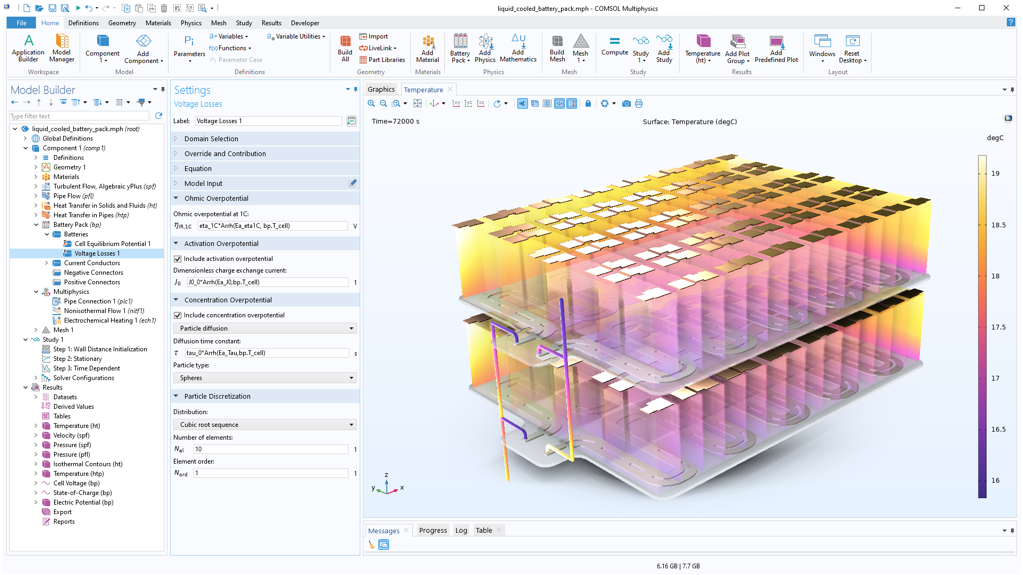Multiphysics modeling and simulation helps organisations innovate faster, smarter, and at a lower financial cost. Incorporating the COMSOL Multiphysics software into the R&D workflow enables engineering teams to accurately model real-world designs, devices, and processes as well as build and maintain their own standalone simulation apps. This ultimately leads to a stronger understanding of product behavior and quicker answers during the development cycle. The COMSOL Conference 2023 Bengaluru showcased how engineers and researchers are using multiphysics modeling to further their work across industries.
One Simulation Environment, Any Engineering Field
The COMSOL Multiphysics software features a consistent user experience across engineering applications. The simulation platform is used in all fields of engineering, manufacturing, and scientific research and brings fully coupled multiphysics and single-physics modeling capabilities, model management, and user-friendly tools for building and maintaining custom simulation apps. The COMSOL Multiphysics platform product includes the Model Builder for creating models, the Application Builder for building custom simulation apps, and the Model Manager to further support collaboration. Add-on modules provide specialized functionality for electromagnetics, structural mechanics, acoustics, fluid flow, heat transfer, and chemical engineering. Users who want to interface directly with CAD and other third-party software can do so via the corresponding LiveLink product.
Industry Examples
The broad capabilities of the COMSOL Multiphysics software means that it is being used in a multitude of ways. At the COMSOL Conference 2023 Bengaluru, attendees heard from keynote speakers representing four different organisations. For instance, on November 30, Dr. Durga Prasad of the Physical Research Laboratory (PRL) discussed how simulation is beneficial for understanding the thermophysics and heat loss from the interior of the Moon. This work is crucial for lunar science and exploration. Then, Manoj Mittal of NKT took the stage to discuss simulation-driven product development with an example of how they used COMSOL Multiphysics to validate the design of a new dry-type cable termination that meets IEC and CIGRE standards.
On December 1, two back-to-back keynote highlighted the benefits of using multiphysics modeling and simulation for aerospace and defense applications. First, Dr. Balamati Choudhury of CSIR-National Aerospace Laboratories (NAL) discussed their use of multiphysics-integrated electromagnetic simulation for various electromagnetics designs and applications, along with certification challenges. Additionally, Choudhury shared innovative research on metasurface-based high numerical apertures and invisibility cloaking. Ashok Kumar Sharma also shared how Larsen & Toubro Defence is using COMSOL Multiphysics to develop designs for complex defense systems in a timely manner.
The use of COMSOL Multiphysics in industry and academia will continue to grow with the release of its latest version, version 6.2. This version brings enhanced modeling capabilities, faster solver technology, and improved user experience. It also features game-changing functionality for simulation apps and digital twins. On November 30, conference attendees saw version 6.2 in action in a keynote talk by Mads Jensen of COMSOL.
 A multiphysics model of a liquid-cooled battery pack shown in the user interface of COMSOL Multiphysics version 6.2.
A multiphysics model of a liquid-cooled battery pack shown in the user interface of COMSOL Multiphysics version 6.2.
Standalone Apps Accelerate Innovation
COMSOL Multiphysics includes the Application Builder for users to build their own custom apps. The add-on product called COMSOL Compiler™ makes it easy to turn the apps into standalone simulation apps that can be distributed to anyone and run anywhere. COMSOL Multiphysics users who build standalone apps are free to distribute the apps at their own discretion. There is no limit to how many apps they build or to whom they send the standalone apps.
During the presentation on news in COMSOL Multiphysics version 6.2, attendees saw how a standalone simulation app is used to predict curing times for concrete casting at construction sites. In a subsequent keynote on November 30, Pawan Soami of COMSOL delved deeper into creating standalone apps.

The standalone simulation app that Heidelberg Materials provides to its customers, showing the temperature and strength of a concrete casting. Image provided by Deflexional.
COMSOL Conference
The COMSOL Conference is a leading event for engineers, scientists, and researchers who want to stay ahead of the curve in multiphysics simulation. The 2023 event program featured keynote talks, interactive poster and slideshow presentations, and minicourses where attendees can learn firsthand about the modeling capabilities of COMSOL Multiphysics and its add-on products.
“The conference is a great platform that enables researchers and industry professionals to showcase their technical work, share ideas, and learn new skills for using COMSOL Multiphysics,” said Pawan Soami, managing director of COMSOL in India.
